Why ABA Therapy is the Gold Standard for Autism Treatment
Exploring the Dominance of ABA Therapy in Autism Care


Understanding ABA Therapy
Applied Behavior Analysis (ABA) therapy is heralded as the 'gold standard' treatment for Autism Spectrum Disorder (ASD). With its roots in the science of learning and behavior, ABA has been instrumental in improving the quality of life for individuals with autism. This article delves into why ABA therapy remains the leading intervention, exploring its methodologies, scientific backing, historical development, and comparisons with other treatment modalities.
The Scientific Foundation of ABA Therapy
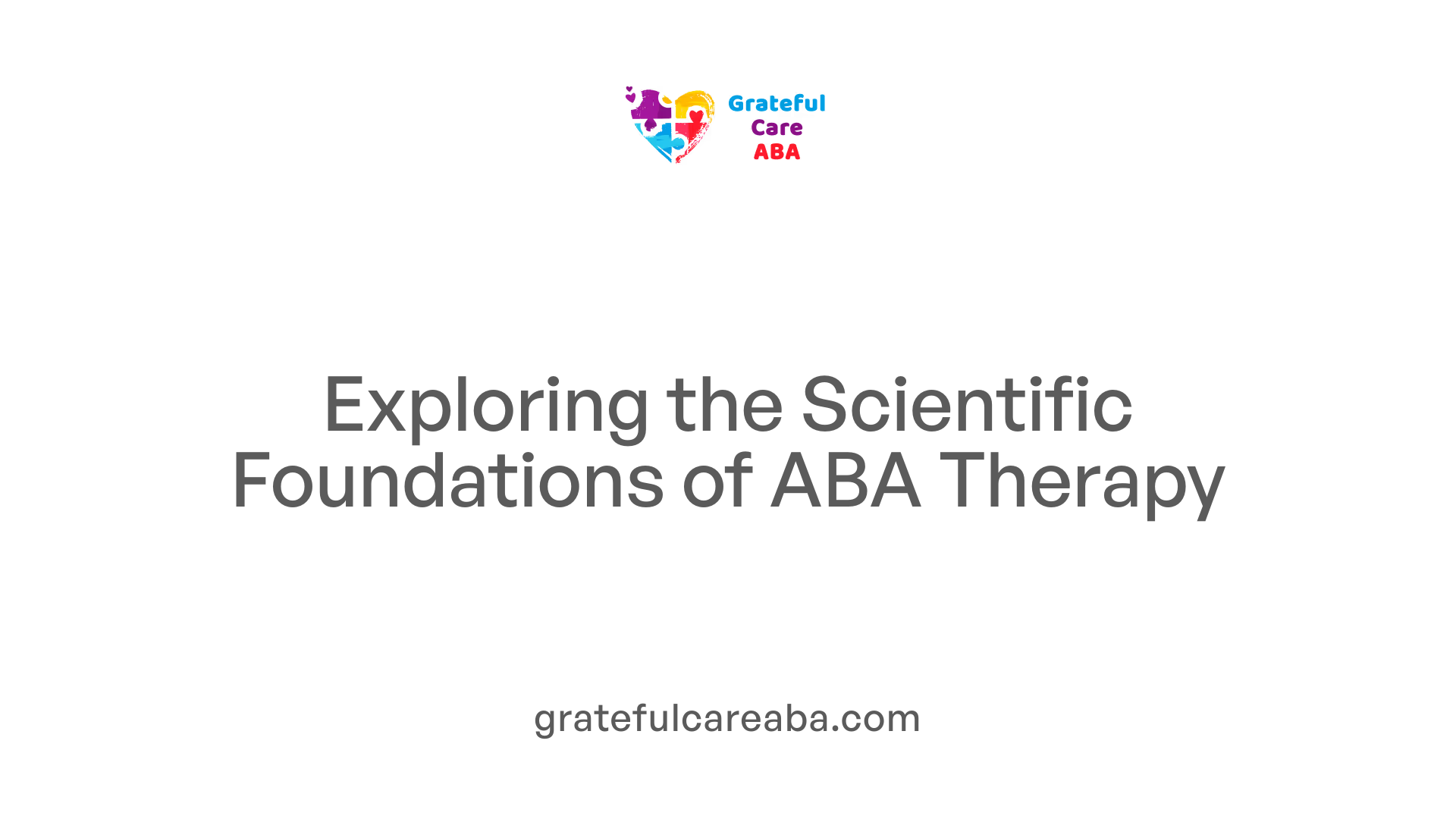
What makes ABA therapy a leading treatment for autism?
ABA therapy is recognized as a top-tier treatment for Autism Spectrum Disorder (ASD) due to its robust scientific foundation. This approach is underpinned by decades of thorough research, demonstrating its effectiveness particularly when implemented early and with intensity. The therapy focuses on essential skills such as communication, socialization, and daily living tasks, tailoring interventions to each child’s unique strengths and interests.
The principles of ABA
ABA interventions utilize a variety of principles grounded in the science of learning and behavior. The core methodology includes analyzing:
- Antecedents: What happens before a behavior occurs.
- Behavior: The actual behavior being observed.
- Consequences: What follows the behavior.
By understanding these components, practitioners can enhance beneficial behaviors, like communication and social interaction, while decreasing maladaptive actions. Techniques such as positive reinforcement ensure that children are rewarded for desirable behaviors, encouraging their recurrence and fostering meaningful change.
Behavioral and learning science underpinning ABA
The foundation of ABA is grounded in behavioral and learning science, focusing on how behavior is learned and modified. This research-driven approach highlights:
- Individualization: Programs are customized to fit each child's specific needs, ensuring flexibility rather than a one-size-fits-all solution.
- Parental Involvement: Engaging families in the therapeutic process leads to more effective outcomes.
In summary, ABA therapy's comprehensive and scientifically validated framework makes it a leading method for supporting the diverse needs of children with autism.
Historical Context and Validation of ABA Therapy
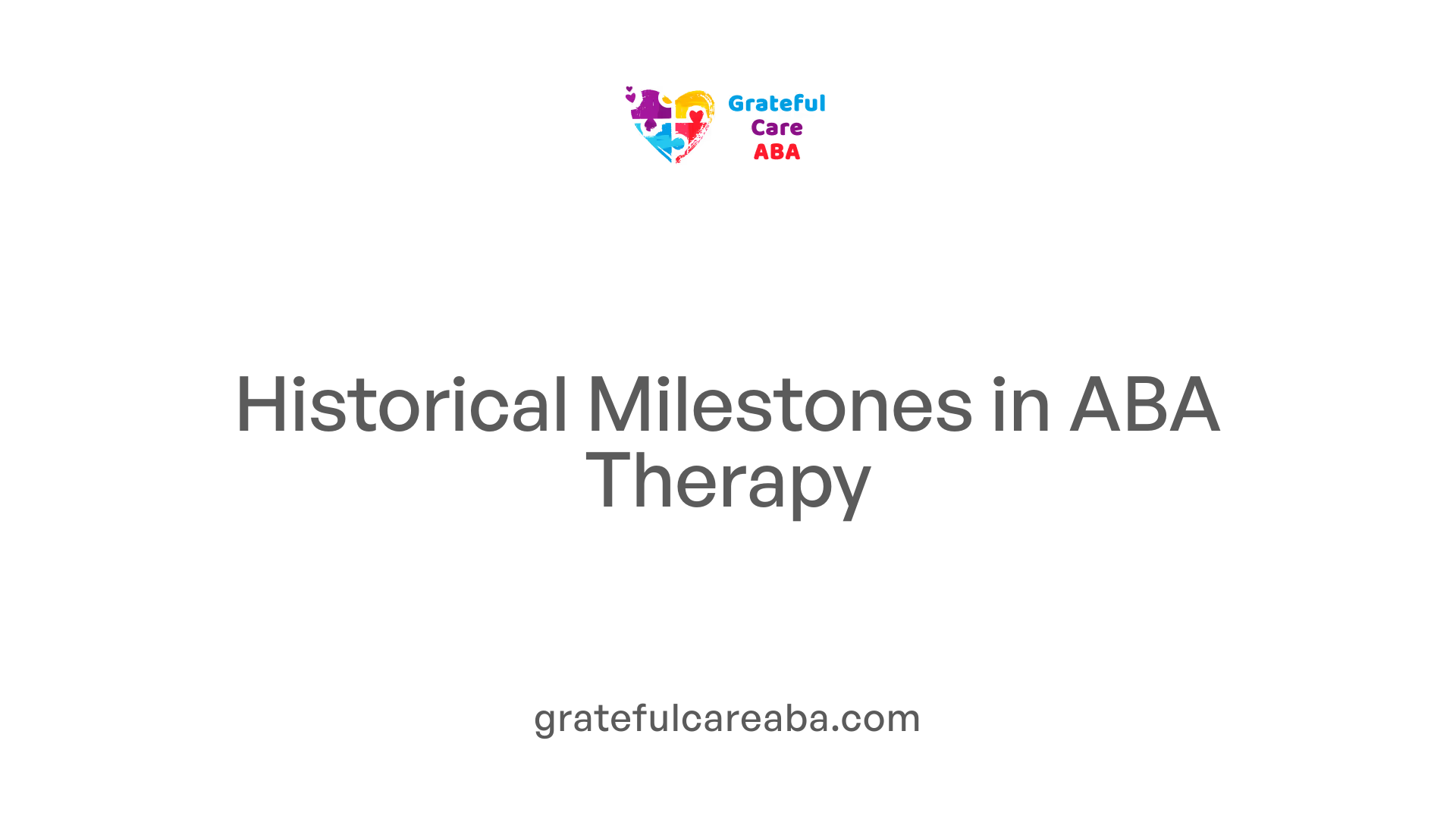
Origins of ABA
Applied Behavior Analysis (ABA) has been a foundational intervention for autism spectrum disorder (ASD) since the 1960s. The approach is grounded in the principles of behavior analysis, a field that examines how behavior changes in response to environmental factors. ABA focuses on improving socially significant behaviors through understanding learning processes and behavior modification techniques such as positive reinforcement.
Significant studies by Lovaas and others
One of the most pivotal studies in the history of ABA was conducted by Ole Ivar Lovaas in 1987, which demonstrated that children receiving intensive ABA therapy—40 hours or more per week—showed significantly better outcomes in cognitive and educational functioning compared to those receiving fewer hours. In this study, 47% of the children in the ABA group achieved normal scores on standardized assessments, contrasted starkly with only 2% in the control group, underscoring the efficacy of intensive ABA interventions.
Additionally, the Surgeon General's Report published in 1999 validated ABA methods as effective in reducing inappropriate behaviors and promoting language, communication, and social skills among children with autism. Research continues to support the effectiveness of ABA, highlighting improvements across multiple outcome measures, including social functioning, language development, and cognitive skills.
Scientific validation over the decades
Over the past 60 years, ABA has garnered recognition as the 'gold standard' in autism treatment due to its solid research base. Numerous meta-analyses, including one published recently in JAMA Pediatrics involving over 9,000 children, have documented significant positive outcomes associated with various ABA interventions.
Through continuous evaluation and adaptation, ABA has maintained its status as the most researched and widely implemented therapy for autism, supported by reputable bodies such as the American Psychological Association and the American Medical Association. These endorsements reinforce ABA's standing as a scientifically validated approach capable of making meaningful improvements in the lives of individuals with autism.
Why ABA is Considered the Gold Standard
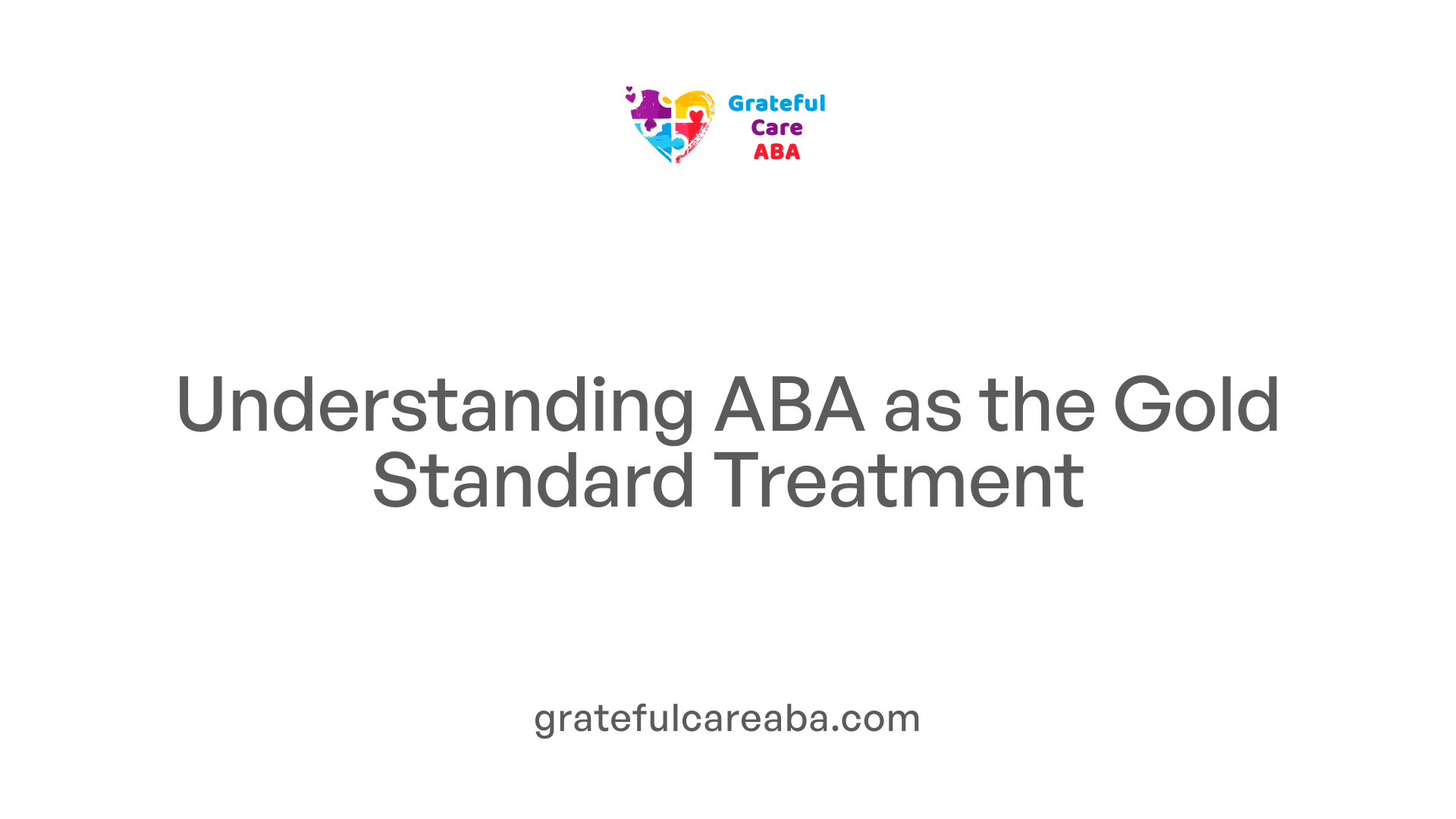
What is considered the gold standard treatment for autism?
Applied Behavior Analysis (ABA) is widely recognized as the gold standard treatment for autism spectrum disorder (ASD), supported by extensive research demonstrating its effectiveness. ABA focuses on understanding behaviors and employs methods like positive reinforcement to promote skill acquisition and reduce maladaptive behaviors.
Organizations such as the American Medical Association (AMA) and the American Psychological Association (APA) endorse ABA as a safe and evidence-based therapy. According to these authorities, ABA therapy is grounded in rigorous scientific principles and has a robust track record, making it suitable for children with ASD.
However, access to ABA therapy can be challenging. The National Coalition for Access to Autism Services (NCAAS) emphasizes the importance of maintaining and expanding access to these services. They advocate for the individualized nature of ABA therapy, ensuring that treatment is tailored to the unique needs of each child.
Despite the recognized benefits, there are ongoing concerns surrounding insurance coverage and affordability. Many families encounter obstacles in obtaining adequate therapeutic services, particularly with programs like TRICARE, which can impact the availability of necessary interventions. Nonetheless, advocacy efforts continue to work towards ensuring that children with autism have access to high-quality ABA therapy that supports their developmental potential.
| Factors | Details | Organizations Involved |
|---|---|---|
| Evidence Base | Extensive research supports efficacy of ABA | AMA, APA |
| Access Advocacy | NCAAS promotes individualized access | NCAAS |
| Coverage Challenges | High costs and complex insurance requirements | Various advocacy groups |
| Long-standing Recognition | Considered effective for over 60 years | Government recommendations |
| Treatment Focus | Skill acquisition & reducing maladaptive behaviors |
Methodology and Techniques Used in ABA
Core techniques such as positive reinforcement
Applied Behavior Analysis (ABA) primarily utilizes positive reinforcement, which is crucial for encouraging desired behaviors. This method rewards positive actions, thereby increasing the likelihood of these behaviors being repeated. For example, if a child successfully communicates using words instead of gestures, they might receive praise or a small reward, reinforcing this communication development.
Other essential techniques in ABA include:
- Modeling: Demonstrating a behavior for the child to observe and imitate.
- Prompting: Providing cues or hints to guide the child toward the desired behavior.
- Shaping: Gradually reinforcing closer approximations to the target behavior.
Customization and behavioral analysis
An effective ABA program is highly individualized, ensuring that the interventions are tailored to each child's specific needs. This customization is integral to achieve meaningful progress in behaviors.
ABA incorporates a detailed behavioral analysis process that examines:
- Antecedents: What occurs before a behavior.
- Behavior: The observed action or response.
- Consequences: What follows the behavior.
This analysis helps practitioners understand behavioral patterns and craft interventions that are relevant and impactful, thereby optimizing the therapeutic experience for each child.
Effectiveness and Outcomes of ABA Therapy
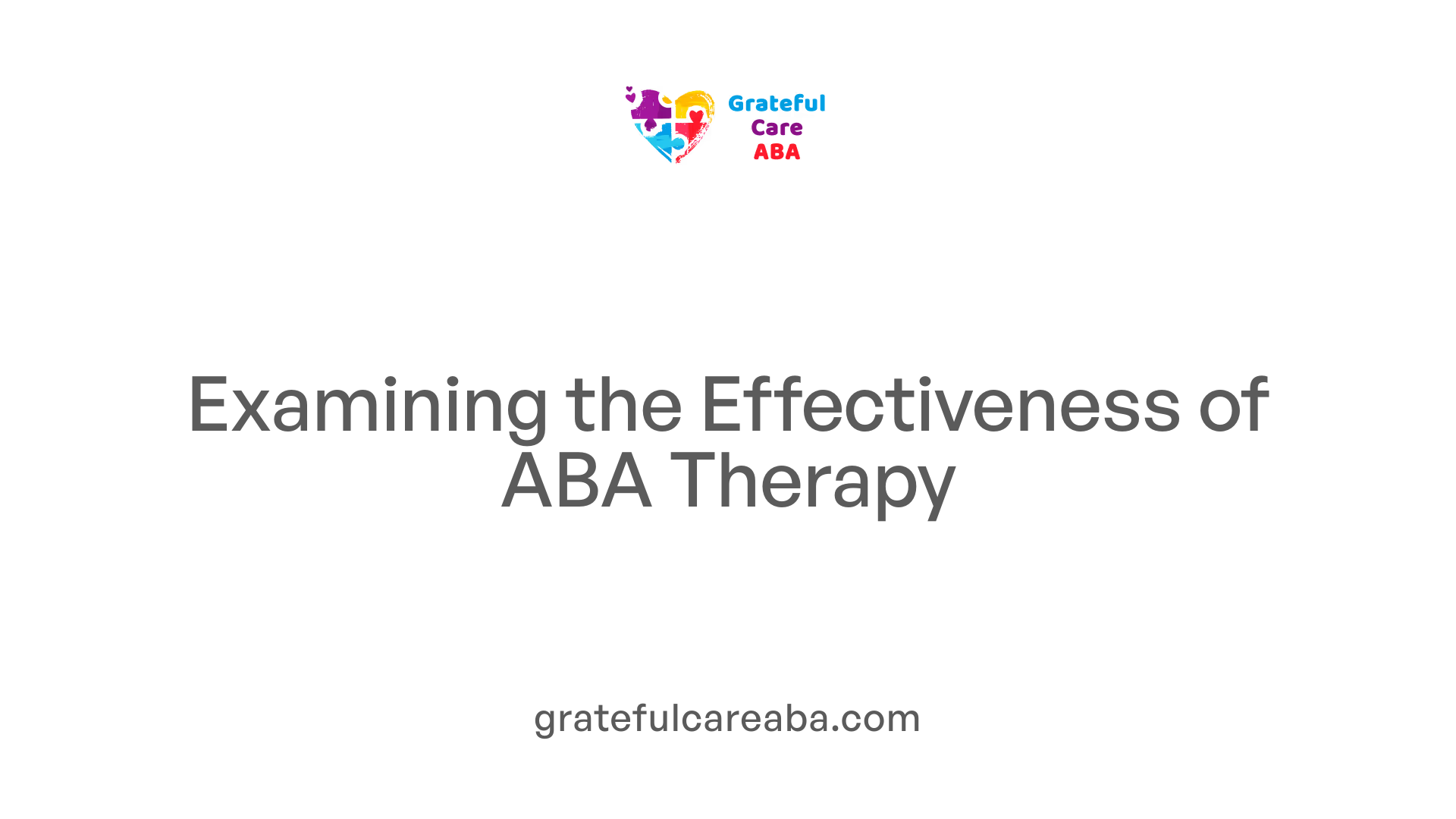
Improvements in Communication, Social Skills, and Daily Living
Applied Behavior Analysis (ABA) has proven effective in enhancing communication skills, social interactions, and daily living abilities in children with Autism Spectrum Disorder (ASD). Research indicates that early and intensive ABA interventions can lead to small to moderate improvements in these essential areas. Children with a lower baseline level of adaptive functioning tend to experience the most significant gains, while those who start with higher functioning may benefit less from this approach.
In practical terms, ABA employs techniques such as positive reinforcement to encourage desirable behaviors, allowing children to learn effective communication styles and social skills within a structured environment. This interaction is crucial as it equips them with necessary life skills, leading to increased independence.
Evidence-Based Outcomes
The evidence base for ABA therapy is extensive. It is recognized as a gold-standard intervention for children with ASD, supported by decades of rigorous research showing its effectiveness in producing significant improvements across multiple developmental domains. Meta-analyses encompassing thousands of children indicate notable outcomes in areas such as cognitive functioning, language development, and reduced challenging behaviors.
Despite the high expectations set by controlled research, real-world efficacy can differ due to practical challenges in implementation and varying degrees of service fidelity. Nonetheless, when appropriately tailored and delivered intensively—typically 25 to 40 hours a week—ABA therapy remains one of the most established methods for fostering positive behavioral change in children with autism.
Comparative Efficacy of ABA Therapy
How does ABA therapy compare to other autism treatment options?
ABA therapy is widely acknowledged as the most effective intervention for autism spectrum disorder (ASD), largely due to its robust research foundation. It excels in tailoring approaches to fit the unique needs of each child. Key methodologies within ABA, such as Early Intensive Behavioral Intervention (EIBI) and Pivotal Response Training (PRT), cater to various age groups and skill levels.
In contrast to ABA, other therapies like speech therapy and occupational therapy focus on specific skill sets, such as improving communication or enhancing daily living skills. While these therapies play crucial roles in a comprehensive treatment plan, they may not address the broader behavioral challenges that children with ASD face. Additionally, pharmacological treatments can help manage symptoms, yet they do not address the core features of autism, limiting their long-term efficacy.
It's vital for families to critically assess all available treatments and prioritize evidence-based options. Several non-evidence-based therapies, which include certain behavioral interventions and biomedical approaches, may lack scientific support and, in some cases, can be detrimental. Early diagnosis, coupled with effective interventions like ABA, significantly optimizes outcomes for children diagnosed with ASD.
| Therapy Type | Focus | Efficacy |
|---|---|---|
| ABA Therapy | Reinforcement of behaviors, skill acquisition | Research-backed, personalized |
| Speech Therapy | Communication skills | Targeted, variable outcomes |
| Occupational Therapy | Daily living skills | Complementary, variable outcomes |
| Pharmacological | Behavior symptoms management | Symptomatic relief, not core ASD treatment |
ABA's evidence-based approach remains critical in navigating the complex landscape of autism interventions.
Intensity and Duration of ABA Therapy
Recommended treatment hours for effectiveness
The debate surrounding the optimal number of hours for ABA therapy is ongoing. Traditionally, treatment regimens suggested 40 hours per week for maximum effectiveness. However, recent discussions in the field have introduced more flexible guidelines, recommending anywhere from 10 to 20 hours weekly. This shift acknowledges the diverse needs of children with autism, focusing on personalized approaches rather than a one-size-fits-all method.
Several meta-analyses indicate that while higher intensity is often associated with better outcomes, it is essential to tailor interventions to the child's specific circumstances. For instance, children with lower baseline adaptive skills tend to show significant improvements with intensive therapy, while those who are functioning at a higher level may benefit more from a modified approach.
Real-world application challenges
Despite the research supporting ABA therapy's efficacy, real-world implementation poses challenges. Access to therapy is often limited by high costs and complex insurance requirements. A California autism mandate illustrated this concern, revealing that only 66% of children referred for ABA actually started treatment, and a mere 46% remained in therapy for the recommended duration.
Such figures highlight a troubling trend of service discontinuation and raise questions about the long-term commitment to ABA therapy. Moreover, the variability in clinicians' fidelity to the ABA model can further dilute the effectiveness of treatment in practice.
In conclusion, while intensive ABA therapy has documented benefits, a nuanced approach that considers each child's needs, along with enhanced accessibility, is imperative for improving outcomes in autism interventions.
Challenges in Accessing ABA Therapy
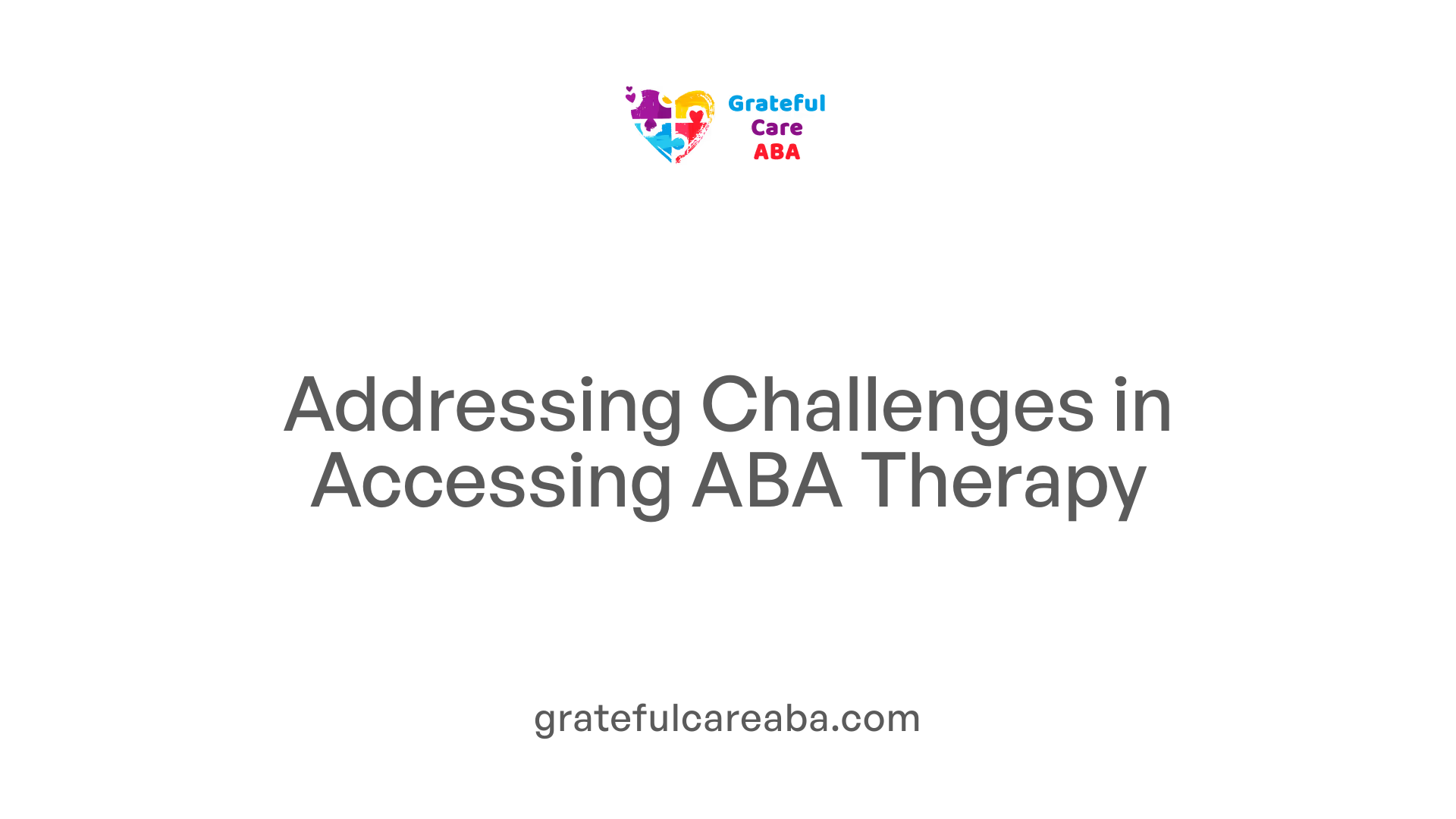
Insurance and Financial Hurdles
Access to Applied Behavior Analysis (ABA) therapy can be significantly hindered by insurance coverage and financial constraints. Many families find themselves overwhelmed by high costs associated with therapy sessions, which can run into the thousands of dollars each year. The complexities of insurance policies often result in many children not receiving the full range of necessary therapeutic services. Moreover, even with mandates that require insurance companies to cover autism treatments, many parents still face difficulties in getting approvals for evaluations and ongoing care.
Service Discontinuation Rates
Despite the proven benefits and endorsement of ABA therapy by professional organizations, real-world application statistics reveal concerning trends. For instance, during the implementation of California's autism mandate, only 66% of children referred for ABA actually initiated services, and merely 46% remained in treatment for at least 24 months. This data highlights troubling rates of service discontinuation, suggesting that multiple factors, including access challenges and treatment burdens, may prevent families from maintaining consistency in their children's therapy. Such discontinuation can undermine the therapy's efficacy, potentially stemming from either logistical difficulties or lack of support and resources for ongoing treatment.
Future Directions and Alternatives in Autism Treatment
Emerging Therapies and Reduced-Hour ABA Models
As the field of autism treatment continues to evolve, emerging therapies are being explored alongside traditional Applied Behavior Analysis (ABA). Recent discussions suggest a shift towards reduced-hour ABA models, which may improve access to care by meeting the needs of more children without the constraints of high-hour treatments. This approach could alleviate financial and logistical barriers that many families face, given that intensive ABA often requires substantial commitment in time and resources.
Research is now challenging the notion that higher hours of ABA therapy directly correlate with better outcomes. For instance, a recent meta-analysis published in JAMA Pediatrics found minimal association between intensive interventions and significant developmental improvements. This suggests that flexible, lower-hour ABA models might be effective alternatives, making the therapy more accessible to families and reducing wait lists for services.
Caregiver-Mediated Interventions
Another promising avenue is the rise of caregiver-mediated interventions. These approaches empower families to engage in therapeutic activities at home, enabling children to develop essential skills within familiar settings. These interventions can effectively support communication and social skills without necessitating extensive clinical treatment. Caregiver involvement not only enhances learning opportunities for children but also integrates therapy into daily family interactions.
By offering more adaptable and less intensive treatment options, the field is moving towards a more individualized approach that meets the unique needs of each child. Expanding the variety of interventions could lead to improved access to critical support for families dealing with the challenges of autism spectrum disorder (ASD).
| Topic | Description | Potential Benefits |
|---|---|---|
| Reduced-Hour ABA Models | Flexible hours of ABA therapy to improve access and reduce wait times. | Increases availability and affordability. |
| Caregiver-Mediated Interventions | Family-led therapeutic activities to support skill development. | Fosters engagement and reinforces learning |
The Sustained Relevance of ABA Therapy
Despite contemporary debates and challenges in access, Applied Behavior Analysis remains a cornerstone of autism treatment due to its robust research heritage and adaptability. As we advance, ABA will likely continue evolving, integrating emerging insights to further refine therapeutic practices and patient outcomes, sustaining its status as the gold standard for autism intervention.
References
- Patient Outcomes After Applied Behavior Analysis for Autism ...
- Applied Behavior Analysis (ABA) | Autism Speaks
- Rethinking the Gold Standard for Autism Treatment
- NCAAS Cares - National Coalition for Access to Autism Services
- Akron ABA Therapists Explain Why ABA is "Gold Standard" Autism ...
- A Treatment Summary of Applied Behavior Analysis
- Applied behavior analysis interventions for autism spectrum disorders
- Applied Behavior Analysis in Children and Youth with Autism ...
Apply Now
At Grateful Care ABA, we are proud to offer the best ABA therapy services in Indiana. Armed with a team of skilled Board Certified Behavior Analysts (BCBAs), we bring years of experience to the table, making us the preferred provider for ABA therapy in our community.
Understanding that every child with ASD is unique and has unique goals and objectives, our ABA therapists carefully craft personalized ABA therapy plans that are tailored to meet the specific needs of each child. Whether your child needs help with reducing maladaptive behaviors, your child needs IEP support at school, you want your child to be self-sufficient at home, or something else, we use ABA therapy to work diligently toward specific goals. Together we can make a difference in your child’s life!
Contact us today to connect with an ABA therapist and learn more about ABA therapy solutions for your child.

































































































